Lecture 22: Queues
Overview
- The Queue Abstract Data Type
- Linked List Queue Implementation
- The Josephus Problem
Previously
Data Stuctures
- Arrays
- Linked Lists
Abstract Data Types
- Collection
- add, remove, test for containment
- Stack
- push, pop, peek
Stack Ordering
Stacks are Last In, First Out (LIFO):
- the last item pushed is next item popped
Often items should be processed in the order they arrive:
- First In, First Out (FIFO)
Examples:
- Standing in line
- first come, first serve
- Communication buffers
- reading from
InputStream in,in.get()reads characters in order
- reading from
The Queue
Another abstract data type: the queue
Supports two basic operations:
-
void enq(T item)enqueue (add) an item to the end of the queue -
T deq()dequeue (remove) item from the front queue and return it
The first item enqueued is the first to be dequeued, etc
Visualizing Enqueue
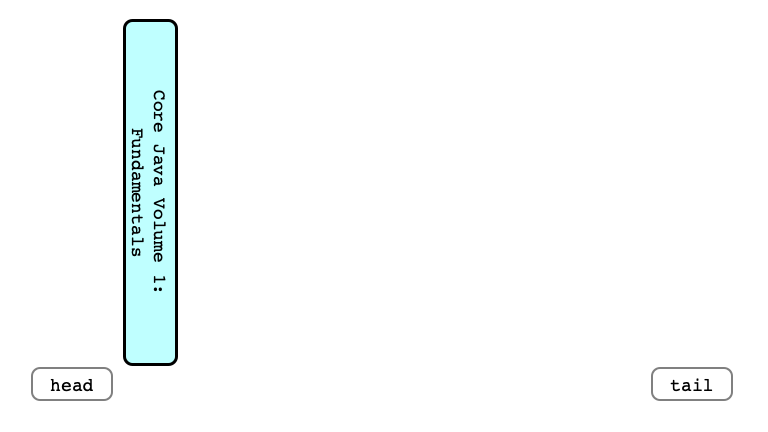
Enqueue Another
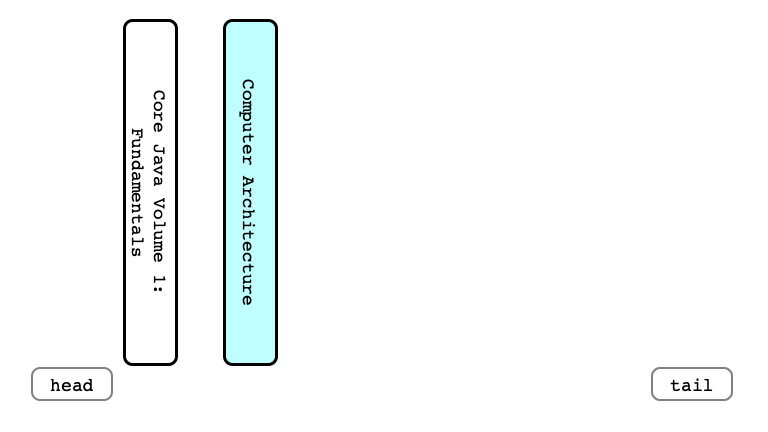
And Another
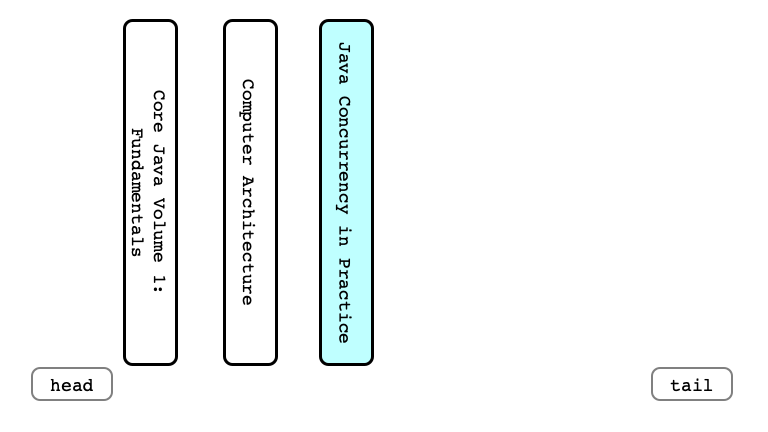
Dequeue Once
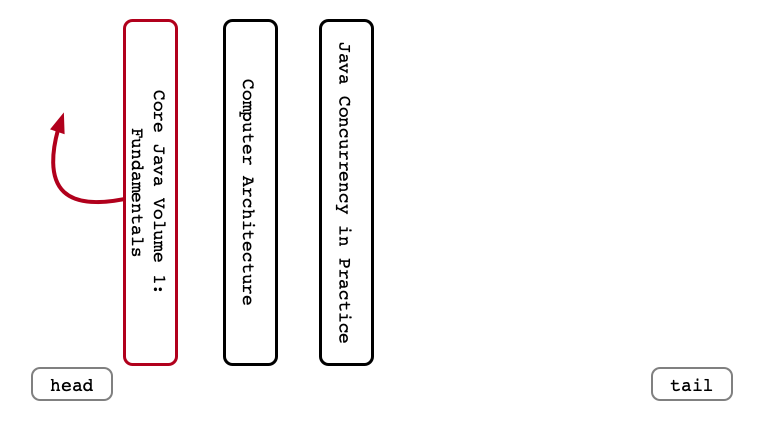
Enqueue Again
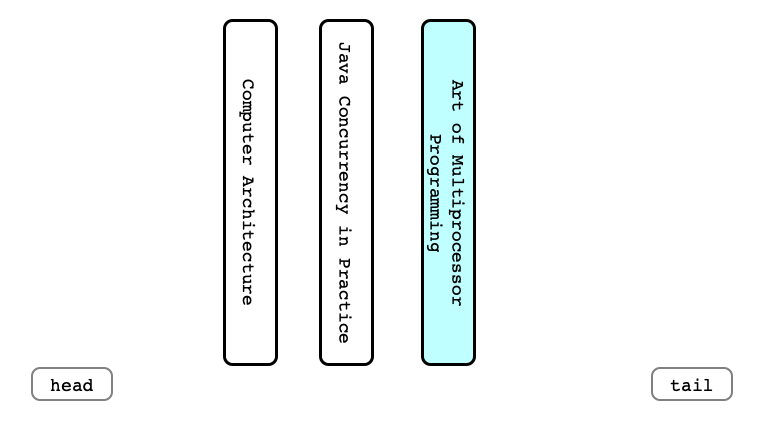
Dequeue Again
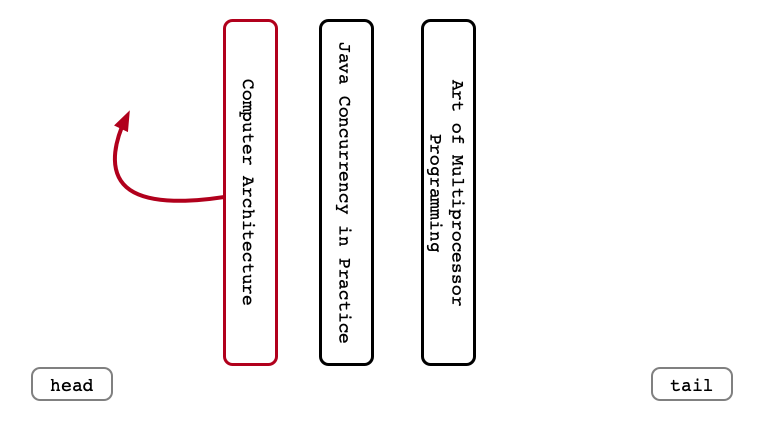
Enqueue Last Time
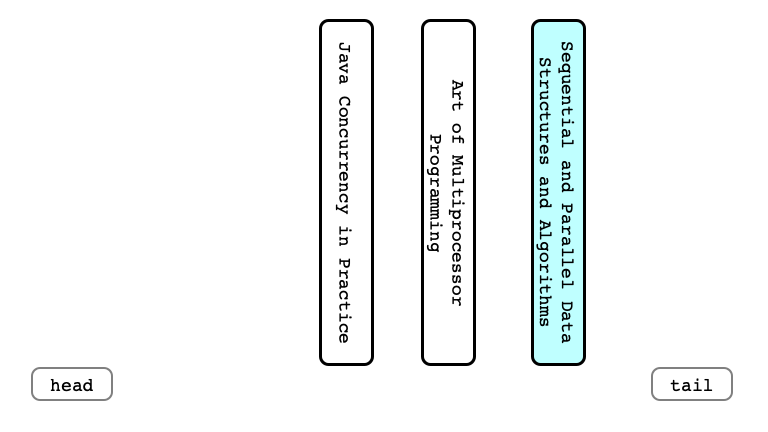
Implementing a Queue
How could we implement a queue with a linked list?
A QueueList
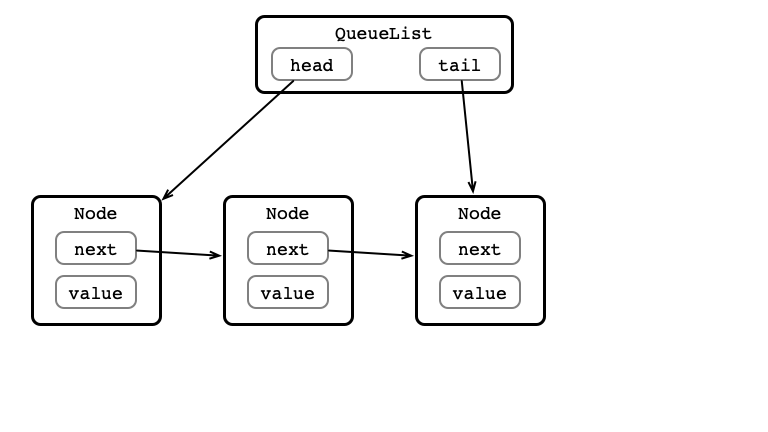
Enqueue Step 1
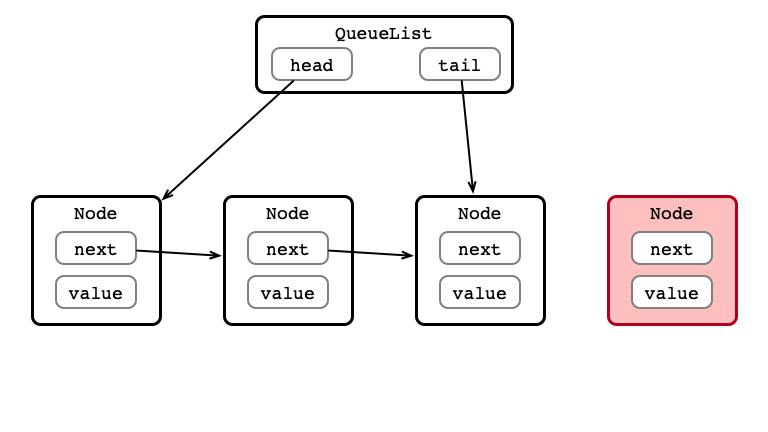
Enqueue Step 2
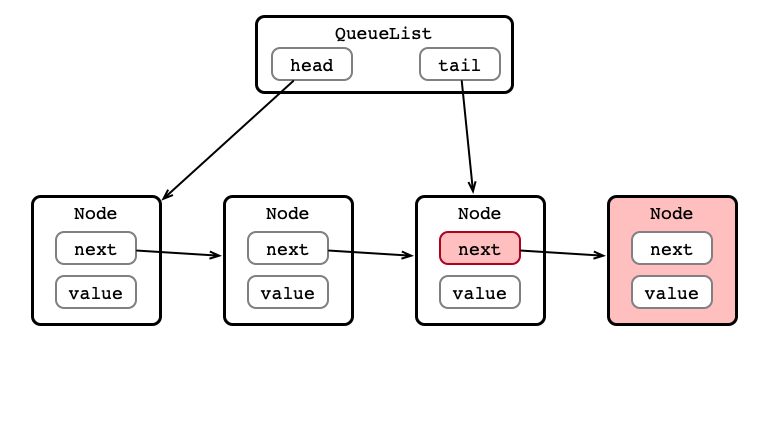
Enqueue Step 3
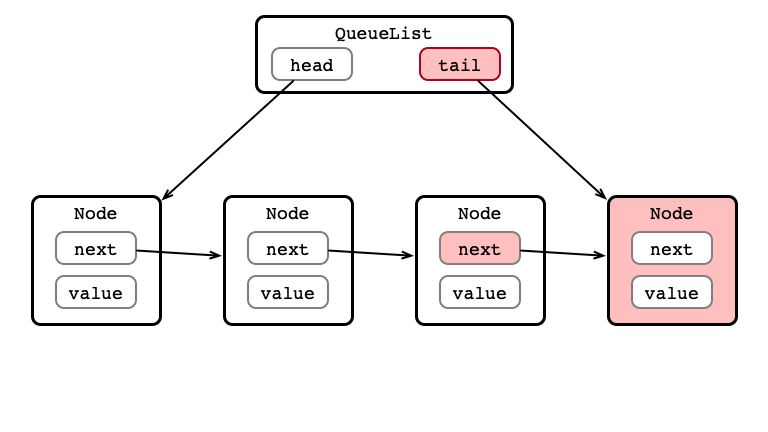
Item Enqueued! Dequeue?
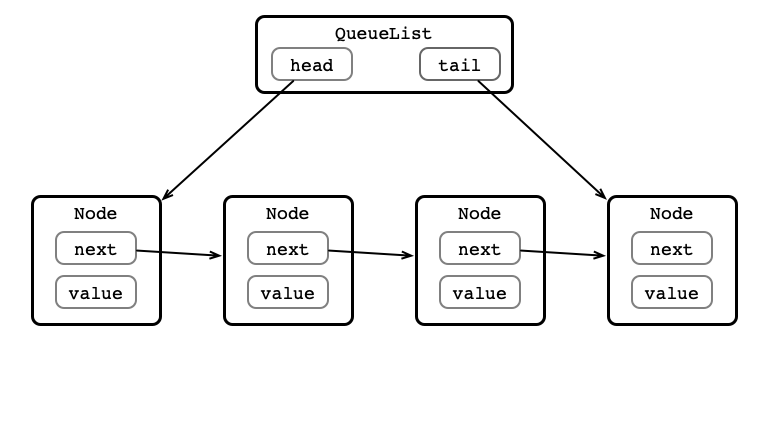
Dequeue Step 1
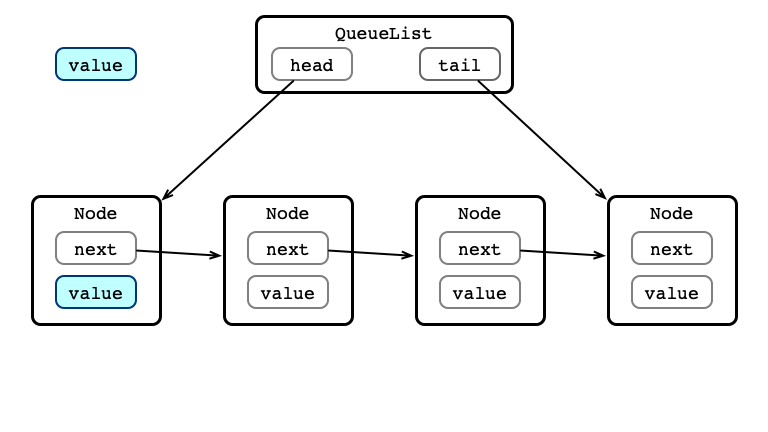
Dequeue Step 2
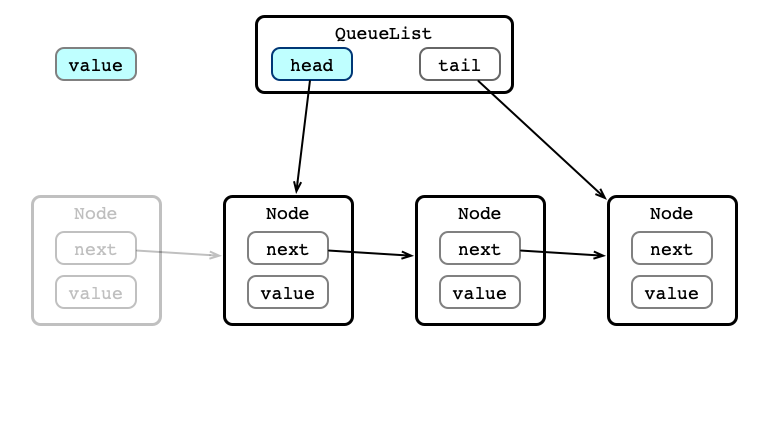
Dequeue Step 3
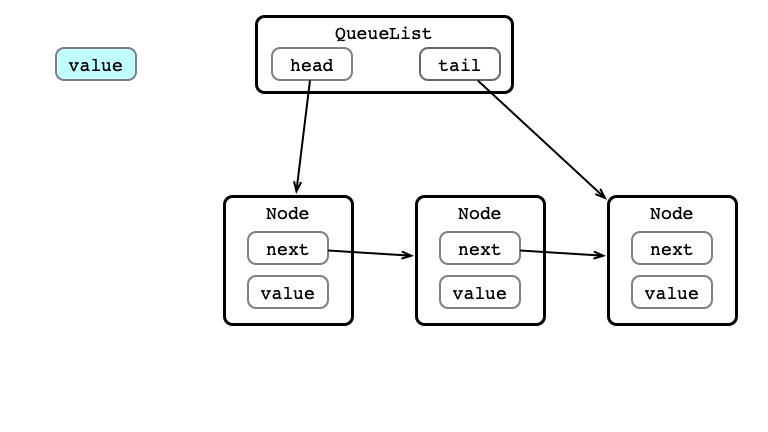
A Queue Interface
public interface SimpleQueue<T> {
// Enqueue item to the queue
void enq(T item);
//Dequeue (i.e., remove and return) the first item in the queue. Returns null if the queue is currently empty
T deq();
// Determine if the queue is currently empty
boolean isEmpty();
}
A Queue Implementation
public class QueueList<T> implements SimpleQueue<T>, Iterable<T> {
private Node head = null;
private Node tail = null;
@Override
public void enq(T item) {
Node nd = new Node(item);
if (head == null) {
head = nd;
tail = nd;
return;
}
tail.next = nd;
tail = nd;
}
@Override
public T deq() {
if (head == null) {
return null;
}
T item = head.item;
head = head.next;
return item;
}
@Override
public boolean isEmpty() {
return (head == null);
}
public T peek() {
if (head == null) {
return null;
}
return head.item;
}
class Node {
private Node next;
private T item;
public Node(T item) {
this.item = item;
}
}
public Iterator<T> iterator() {
return new ListIterator();
}
class ListIterator implements Iterator<T> {
Node curr;
public ListIterator() {
curr = head;
}
public boolean hasNext() {
return (curr != null);
}
public T next() {
if (curr == null) {
return null;
}
T item = curr.item;
curr = curr.next;
return item;
}
}
}
Testing the Queue
The Josephus Problem
- Historical problem inspired by Josephus’ The Jewish War
- We will consider a less gruesome retelling of the problem
Josephus’ Manicure Problem
- $n$ people determine to give each other manicures
- they only have 1 set of tools/supplies
- only one person can give another a manicure at a time
- once a person receives a manicure, they leave
Setup:
- people seated at a round table
- labeled sequentially clock-wise from $1$ to $n$
Illustration $n = 5$
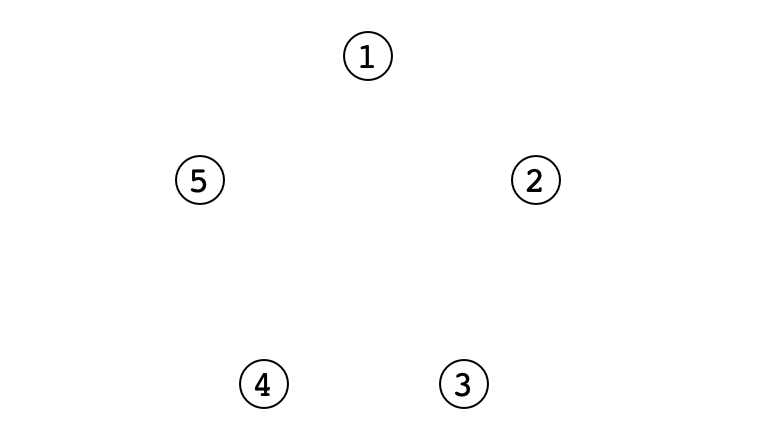
A System
- the current manicurist gives a manicure to the person seated to their left
- after the manicure, person to their left leaves
- the manicurist hands the tools to the next person to their left who becomes the next manicurist
- repeat until all but one person receives a manicure
Initially, person 1 is manicurist.
Example $n = 5$

Example $n = 8$
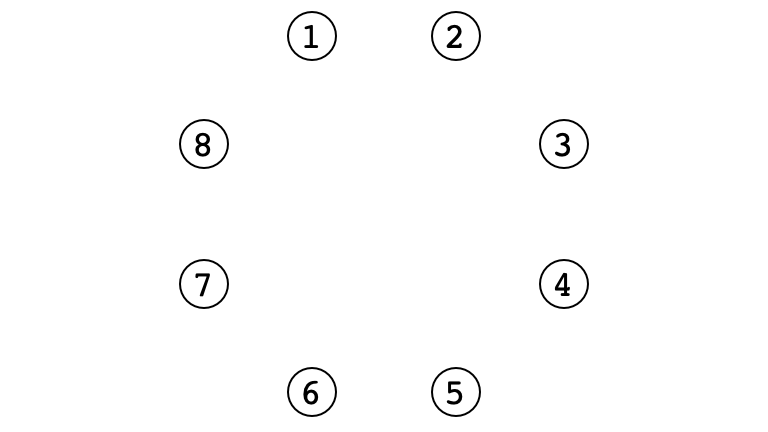
A Wrinkle
Josephus does not want a manicure!
Question. Where should Josephus sit at the table to ensure that he does not receive a manicure?
An Activity
-
Devise a procedure for determining where Josephus should sit to avoid a manicure
-
Use a queue!
- assume your queue has a
getSize()method
- assume your queue has a